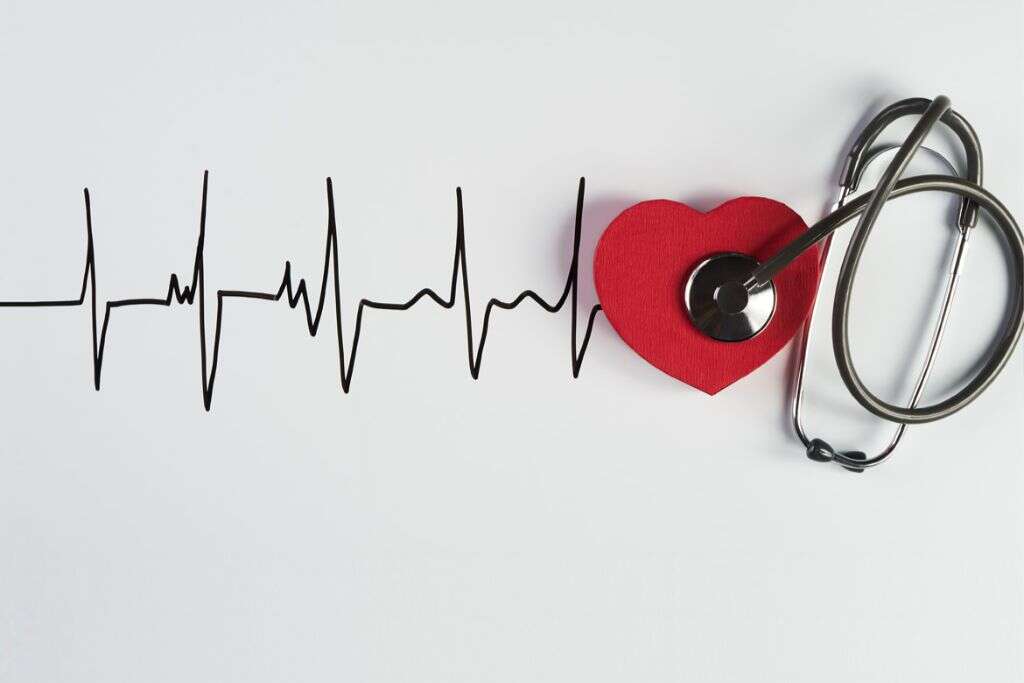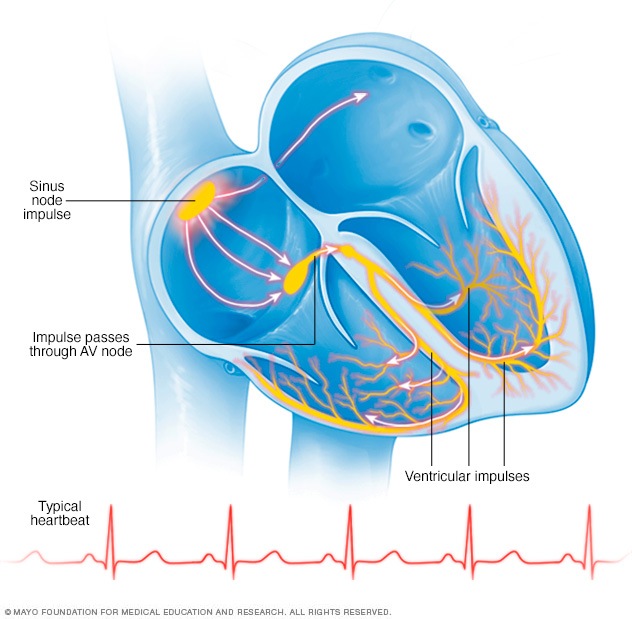
If an arrhythmia problem falls under the category of sinus arrest it can be more frightening. Many people have irregular heartbeats and lead perfectly normal lives. Heart arrhythmia is not necessarily life-threatening. It is perfectly normal for heart rate to increase with exertion and slow down once activity ends. We need to keep in mind that many factors impact our heart rate, including age and physical activity. Back in 2002, former U.S president George Bush, who suffers from sinus bradycardia, made headlines when he chocked on a pretzel and fainted. For example, when the vagus nerve sends a signal to the heart it suddenly drops heart rate. When the heart slows down considerably with sinus bradycardia it can lead to fainting. Sinus bradycardia is defined as a heart rhythm with a rate below 60 beats per minute. In other words, the beat rate is too low. During sinus bradycardia the natural pacemaker doesn’t send out a signal telling the heart to beat often enough. Types of sick sinus syndrome Sinus bradycardiaĪ normal heart rate is considered to be from 60 to 100 beats per minute. Research shows that about one in 600 people with heart disease who are over the age of 65 suffer from sick sinus syndrome. Some people with sick sinus syndrome end up needing a pacemaker to help keep their heart in a regular, steady rhythm. 15, 2022.Under normal conditions, your sinus node produces a steady pace of electrical impulses, but if you have sick sinus syndrome, you could have a heart rhythm that is too fast, too slow, pauses for long periods, or a heart rhythm that alternates between these problems. National Heart, Lung, and Blood Institute.

Permanent cardiac pacing: Overiew of devices and indications. Journal of the American College of Cardiology. 2018 ACC/AHA/HRS guideline on the evaluation and management of patients with bradycardia and cardiac conduction delay: A report of the American College of Cardiology/American Heart Association Task Force on Clinical Practice Guidelines and the Heart Rhythm Society. In: Braunwald's Heart Disease: A Textbook of Cardiovascular Medicine. Sinus node dysfunction: Clinical manifestations, diagnosis, and evaluation. Sinus node dysfunction: Epidemiology, etiology, and natural history. In: Clinical Arrhythmology and Electrophysiology: A Companion to Braunwald's Heart Disease. The heart rate alternates between unusually slow and fast rhythms, often with a long pause between heartbeats. The heart rate is within regular range at rest but doesn't increase as much as it should with physical activity. Signals to the upper heart chambers are slowed or blocked, causing pauses or skipped beats. Signals from the sinus node pause, causing skipped beats. The sinus node produces a slow heartbeat. Neuromuscular diseases, such as muscular dystrophy.


Medications to treat irregular heartbeats (arrhythmias).Medications to treat high blood pressure, including calcium channel blockers and beta blockers.Inflammatory diseases affecting the heart.Damage to the sinus node or scarring from heart surgery.Age-related wear and tear of heart tissues.Sick sinus syndrome is relatively uncommon, but the risk of developing it increases with age.Ĭauses of sick sinus node syndrome can include: The heartbeat can be too fast, too slow, interrupted by long pauses - or an alternating combination of these rhythm issues. In sick sinus syndrome, the electrical signals are irregularly paced.

The pace changes depending on activity, emotions and other factors. Typically, the sinus node creates a steady pace of electrical impulses. From the sinus node, electrical signals travel across the atria to the ventricles, causing them to contract and pump blood to the lungs and body. This natural pacemaker produces electrical signals that trigger each heartbeat.


 0 kommentar(er)
0 kommentar(er)
